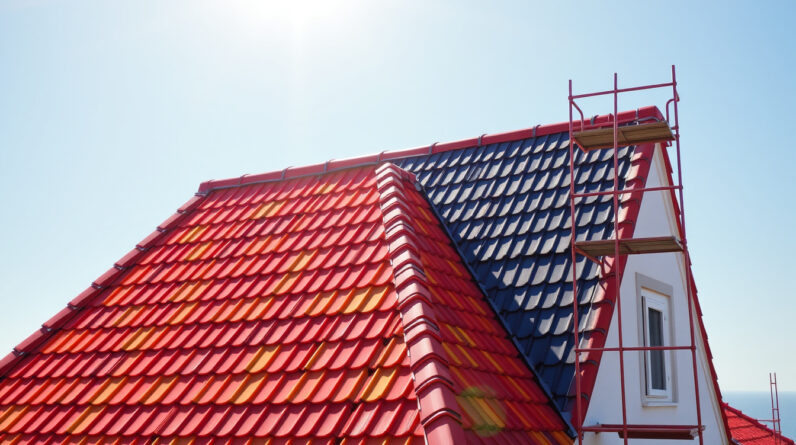If you’re looking to prevent water damage in your bathroom, caulking your shower drain is an essential task.
Water can seep through even the tiniest gaps in your shower drain, leading to mold, mildew, and even structural damage. But don’t worry! We’re here to help you with a simple step-by-step guide on how to caulk a shower drain.
Caulking your shower drain is not only a necessary preventative measure, but it’s also an easy DIY project that can save you money on home repairs.
By following our guide, you’ll have a waterproof seal around your shower drain in no time.
Key Takeaways:
- Caulking your shower drain can prevent water damage and save you money on home repairs.
- Our step-by-step guide will make caulking your shower drain an easy DIY project.
- By following our guide, you’ll have a waterproof seal around your shower drain in no time.
Necessary Tools and Materials
Before we begin caulking the shower drain, let’s first discuss the necessary tools and materials needed. You will need:
| Tools | Materials |
|---|---|
| Caulk gun | Shower drain sealant (such as grout or silicone) |
| Razor blade or utility knife | Paper towels or rags |
| Caulk smoother or plastic spoon | Protective gloves and goggles |
| Scrub brush | Ventilation (open windows or fan) |
| Painter’s tape (optional) |
It is important to use a caulk gun for this project to ensure the sealant is applied evenly and accurately. Protective gloves and goggles should also be worn to protect your skin and eyes from contact with the caulk. Proper ventilation is essential to prevent inhaling any harmful fumes.
As for the sealant, there are different types suitable for caulking a shower drain. Grout and silicone are popular options, but you can also use specific shower drain sealant such as no-caulk or Oatey.
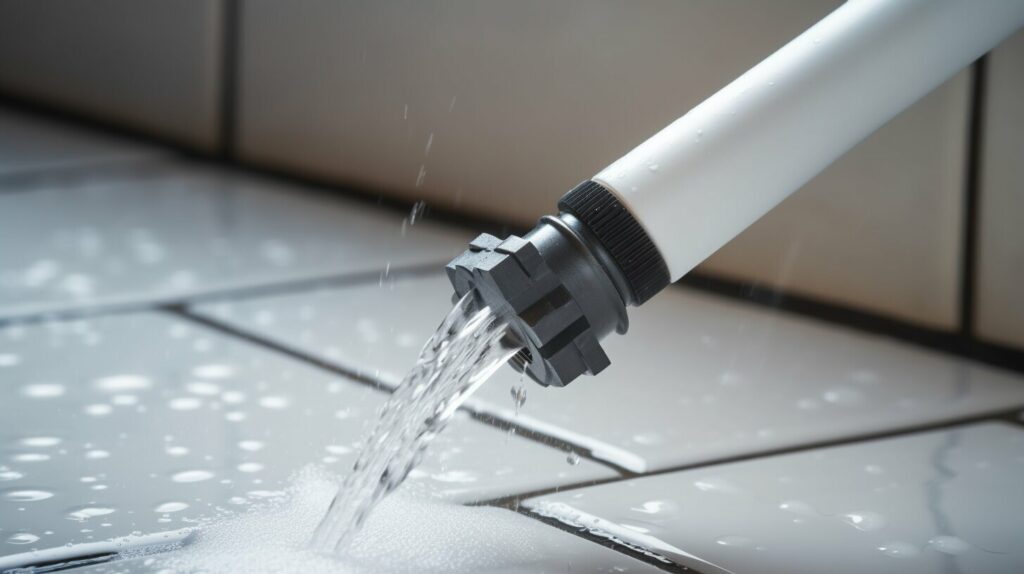
By having all the necessary tools and materials on hand, you will be able to complete the task efficiently and with ease.
How to Caulk a Shower Drain: Safety Precautions
When it comes to any DIY project, safety should always be the top priority. Caulking a shower drain is no exception, as it involves the use of potentially harmful materials and tools.
First, it is important that you wear protective equipment such as gloves and eye goggles to prevent any skin or eye irritations from the caulk. It is also important to ensure proper ventilation during the project to avoid inhaling any harmful fumes from the caulk.
When handling the caulk, be sure to follow the manufacturer’s instructions for proper use. Avoid direct contact with the skin, and wash your hands thoroughly with soap and water after use.
Overall, taking these safety precautions will help to ensure a successful and safe project when caulking your shower drain.

Preparing the Shower Drain for Caulking
Before we can begin caulking the shower drain, we need to properly prepare the area. This will ensure that the caulk adheres properly and provides a long-lasting seal to prevent water damage. Follow these steps to prepare the shower drain:
- Clean the drain: Use a non-abrasive cleaner and a scrub brush to remove any dirt, debris, or soap scum. Rinse thoroughly with water and allow the area to dry completely. Any residual moisture can affect the adhesion of the caulk.
- Dry the area: Use a clean, dry cloth to ensure that the area around the shower drain is completely dry. Moisture can prevent the caulk from properly adhering to the surface.
- Remove old caulk: If there is old or cracked caulk around the shower drain, use a caulk removal tool to scrape it away. Make sure to remove all of the old caulk before applying new caulk. Any residual caulk can affect the adhesion of the new caulk.
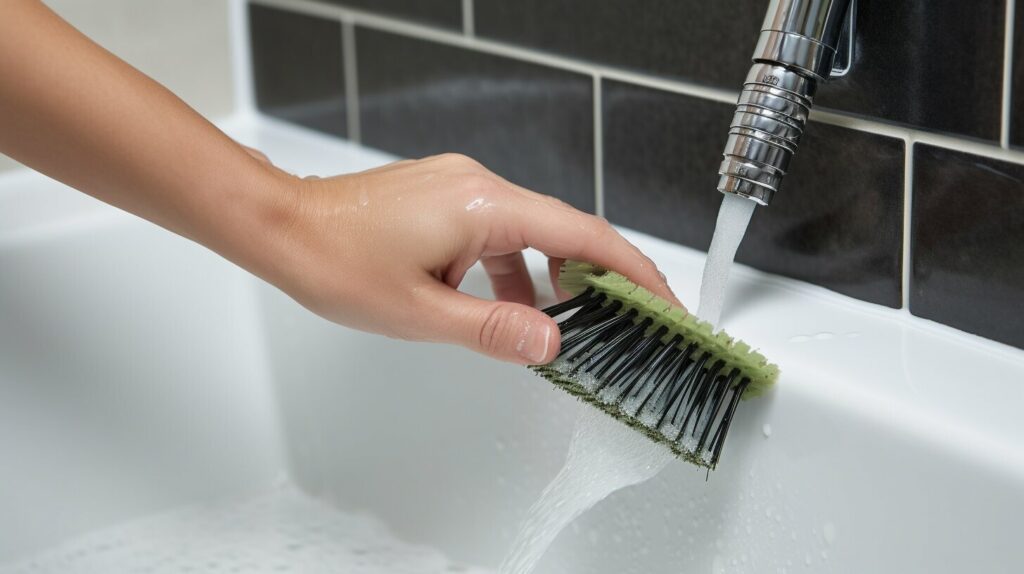
With the area properly prepared, we can move on to the actual process of caulking the shower drain.
Process of Caulking the Shower Drain
Now that you have prepared the shower drain, it’s time to start caulking. Follow these steps to ensure a successful application:
- Load the caulk gun with the chosen caulk for the shower drain. Cut the nozzle to a 45-degree angle, ensuring that the opening is large enough to apply a sufficient amount of caulk.
- Starting at one end of the shower drain, apply a continuous, even stream of caulk around the edge of the drain. Be sure to fill in all gaps between the drain and the surrounding surface.
- Use a caulk smoothing tool or your finger to smooth out the caulk. This will ensure the caulk creates a complete seal and remains in place for a long time.
- Wipe away any excess caulk with a damp cloth or paper towel. This will help to create a neat and clean finish.
- Allow the caulk to dry for the recommended amount of time, usually 24 hours, before using the shower.
Remember, the quality of the caulk application will determine the longevity of the seal, so take your time and follow the steps carefully. Below is a visual representation of the process:
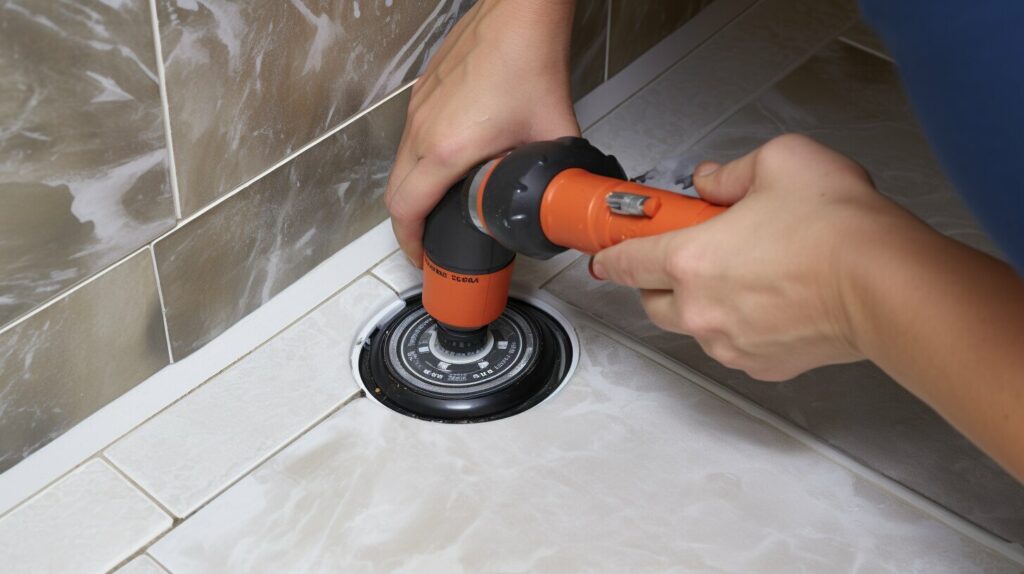
After-Care and Maintenance
After applying the caulk, it is critical to allow sufficient drying time. The manufacturer’s instructions will typically indicate how long to wait before using the shower again. A good rule of thumb is to wait at least 24 hours.
Once the caulk is dry, it’s important to clean the area to remove any excess caulk that may have been missed during the initial application. Use a damp cloth or sponge to wipe away any residue.
Regular maintenance is also crucial to ensure the caulked seal remains intact. Inspect the caulking periodically to check for any cracks or gaps that may have formed over time. If any issues are detected, it’s best to reapply the caulk as soon as possible to prevent water damage.
Remember: Proper maintenance will help prolong the life of your caulked shower drain and prevent costly repairs down the line.
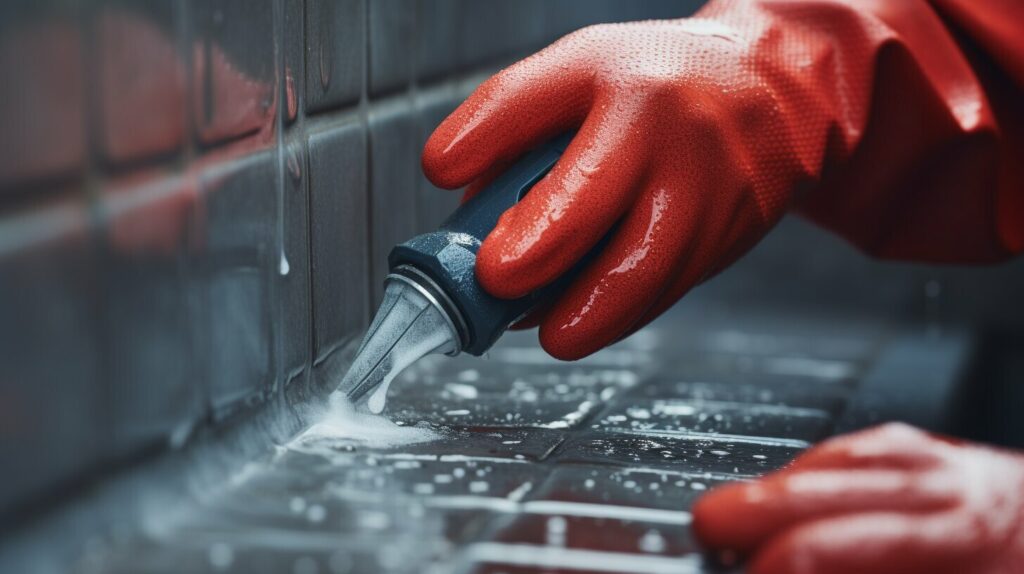
| Do: | Don’t: |
|---|---|
| Inspect the caulking regularly | Allow water to pool around the drain |
| Reapply caulk as needed | Use abrasive cleaners on the caulk |
| Remove excess residue after drying | Ignore cracks or gaps in the caulking |
Common Mistakes and Their Solutions
Despite the seemingly straightforward nature of caulking a shower drain, there are several common mistakes that people make when tackling this project. Here are some issues to look out for and solutions to fix them:
| Common Mistake | Solution |
|---|---|
| Over-application of caulk | Use a caulking gun and only apply a thin, uniform bead of caulk around the drain. Scrape away any additional caulk using a scraper or utility knife before it dries. |
| Not allowing sufficient drying time | Check the manufacturer’s instructions for the recommended drying time of the specific type of caulk being used. Make sure to wait at least the recommended time before using the shower again. |
| Improper preparation of the drain | Thoroughly clean and dry the area around the drain before applying caulk. Remove any old caulk and ensure there is no debris or moisture present. |
If any of these issues arise during the caulking process, don’t worry! With a little extra effort and attention to detail, they can be quickly remedied.
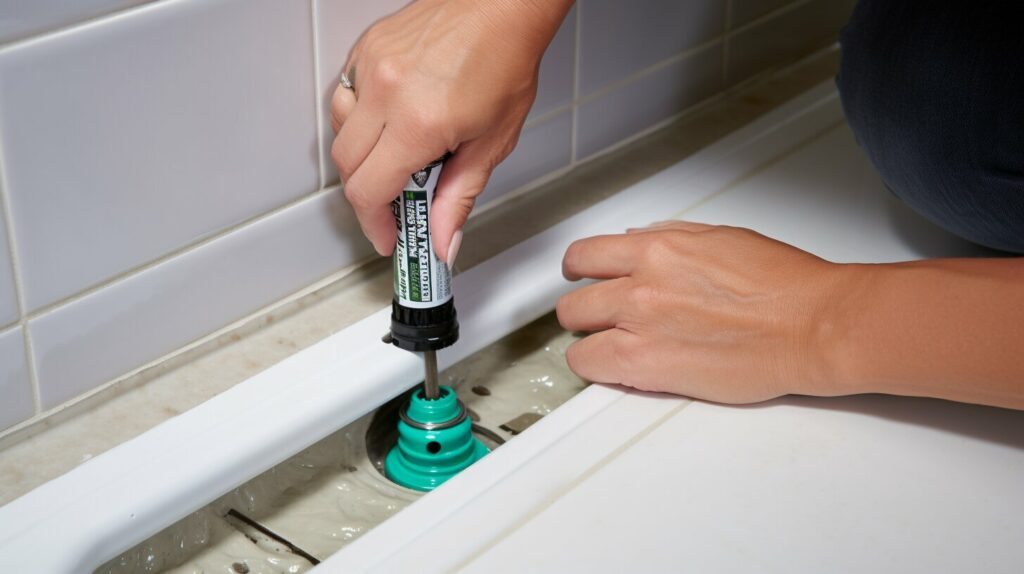
Remember: the key to a successful caulking job is taking the time to properly prepare the area and apply the correct amount of caulk. By avoiding these common mistakes, you can ensure a long-lasting, watertight seal for your shower drain!
Best Sealant for Shower Drain Caulking
Choosing the right sealant for caulkingsealant for caulking your shower drain is crucial for ensuring the longevity and effectiveness of your waterproof seal. The two most common types of sealants are grout and silicone. But which one is the best for your shower drain?
| Type | Pros | Cons |
|---|---|---|
| Grout |
|
|
| Silicone |
|
|
While both grout and silicone can be effective for caulking a shower drain, silicone is generally considered the better option due to its flexibility and ability to adapt to larger gaps. If you’re unsure which sealant to choose, consider the size of the gap you need to fill. For smaller gaps, grout may be sufficient, but for larger gaps, silicone is the way to go.
It’s also important to note that there are specific brands of sealant available that are designed solely for shower drain caulking, such as no-caulk and Oatey.
These brands offer a specialized sealant that is specifically formulated for shower drains, ensuring a longer-lasting and more effective seal.
Remember to choose the right sealant for your shower drain to ensure the best possible results.

DIY vs. Professional Help
When it comes to caulking a shower drain, you may be wondering whether it’s best to tackle the project yourself or seek professional help. There are pros and cons to both options, so let’s take a closer look.
DIY
The biggest advantage of doing it yourself is cost savings. Hiring a professional can be expensive, and if you’re comfortable with DIY projects, you may feel confident enough to take on this task yourself. Additionally, you can take your time and work at your own pace, without having to worry about scheduling or coordinating with a professional.
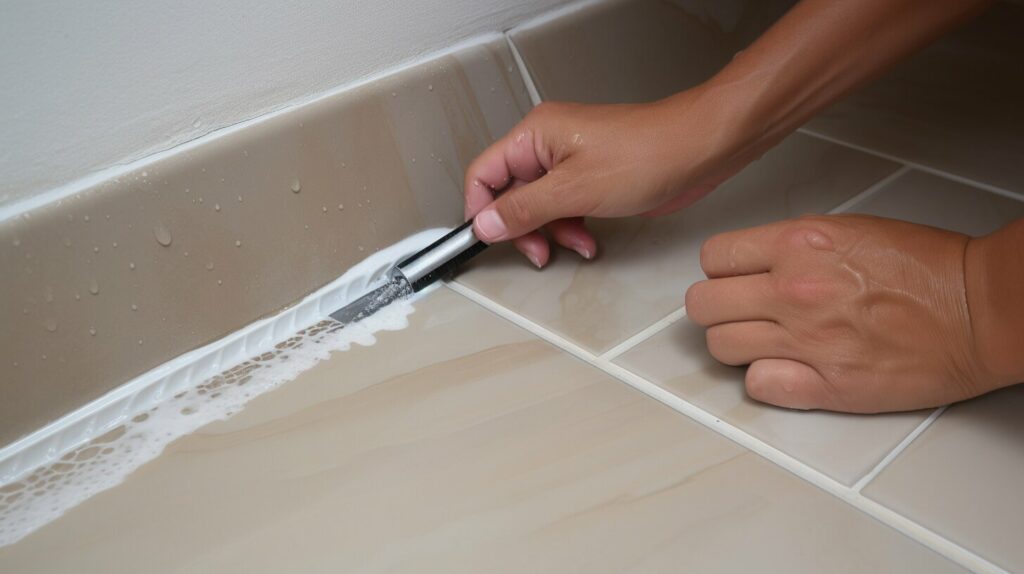
However, there are potential downsides to consider as well. If you’re inexperienced with caulking or DIY in general, you may make mistakes that could compromise the effectiveness of the seal. Additionally, if you don’t have the necessary tools or materials on hand, you’ll need to purchase them, which can add to the overall cost and time required.
Professional Help
If you don’t feel comfortable taking on the project yourself or simply don’t have the time, hiring a professional may be the best option. They will have the necessary tools and expertise to complete the job efficiently and effectively, ensuring a high-quality and long-lasting seal.
However, this option does come at a higher cost and requires scheduling and coordination with the professional, which may not be ideal for everyone.
Ultimately, the decision of whether to DIY or seek professional help comes down to personal preference and skill level. Regardless of your choice, it’s important to ensure that the shower drain is properly caulked for a waterproof seal and the longevity of the shower.
Conclusion
Caulking your shower drain is an essential task to ensure a waterproof seal and the longevity of your shower. By properly caulking your shower drain, you can prevent leaks and water damage to your bathroom. Keeping the area clean and dry and regularly maintaining the caulked seal will ensure its longevity.
Remember, for DIY jobs, take all necessary safety precautions, use the appropriate tools and materials, and follow all instructions carefully for the best results.
Happy caulking!!!
FAQ
Q: How important is caulking a shower drain?
A: Caulking a shower drain is essential for creating a waterproof seal and preventing water damage. It helps to maintain the longevity and integrity of the shower.
Q: What types of caulk are suitable for a shower drain?
A: It is recommended to use a silicone-based caulk specifically designed for wet areas such as bathrooms. These caulks are waterproof and resistant to mold and mildew.
Q: Do I need any special tools for caulking a shower drain?
A: Yes, you will need a caulk gun to apply the caulk evenly and smoothly. Other necessary tools may include a scraper or putty knife to remove old caulk, a cleaning brush, and a towel to dry the area.
Q: What safety precautions should I take when caulking a shower drain?
A: It is important to wear protective equipment such as gloves and safety glasses. Ensure proper ventilation by opening windows or using a fan. Follow the manufacturer’s instructions for safe handling of the caulk.
Q: How do I prepare the shower drain for caulking?
A: Start by cleaning the drain thoroughly to remove any dirt or debris. Ensure the area is completely dry before applying the caulk. If there is old caulk present, use a scraper or putty knife to remove it.
Q: What is the process for caulking a shower drain?
A: Apply a thin bead of caulk around the edge of the drain, ensuring full coverage. Use a caulk smoothing tool or a finger dipped in soapy water to smooth the caulk and create a neat finish. Remove any excess caulk with a damp cloth.
Q: What should I do after caulking the shower drain?
A: Allow the caulk to dry completely before using the shower. Follow any specific drying time mentioned by the manufacturer. After drying, clean the area to remove any residue or debris. Regularly maintain the caulked seal to ensure longevity.
Q: What are common mistakes when caulking a shower drain and how can they be fixed?
A: Common mistakes include over-applying the caulk, not allowing sufficient drying time, and improper preparation of the drain. To fix these issues, remove excess caulk, wait for proper drying, and ensure thorough cleaning and preparation before re-caulking.
Q: Which sealant is best for shower drain caulking?
A: The best sealant for shower drain caulking is a silicone-based caulk. It provides a flexible and waterproof seal. Popular brands such as no-caulk and Oatey offer reliable options.
Q: Should I tackle caulking a shower drain as a DIY project or seek professional help?
A: The decision between DIY and professional help depends on your skill level and confidence in completing the task. If you are comfortable with basic home improvement projects and have the necessary tools, caulking a shower drain can be done as a DIY project. However, if you are unsure or prefer expert assistance, it is advisable to seek professional help.





